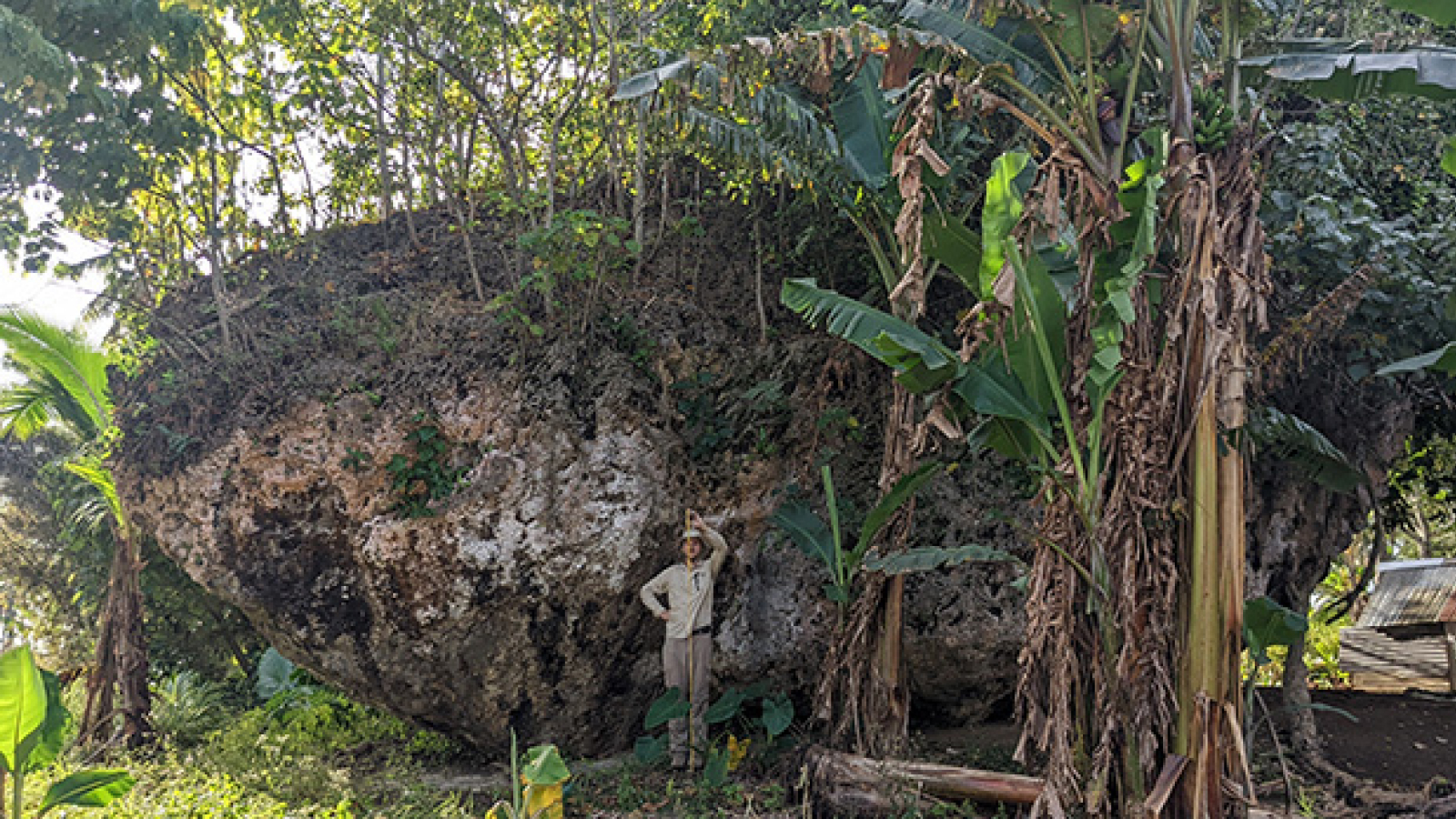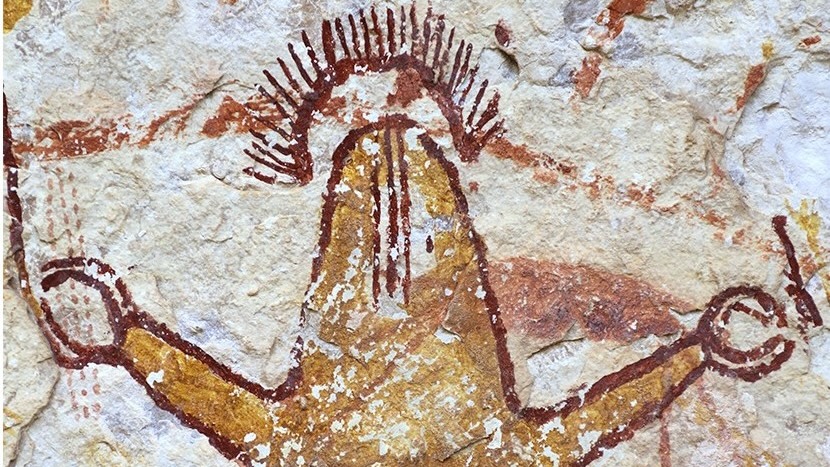There's a humongous boulder on a cliff in Tonga. Now we know how it got there.
A massive boulder named Maka Lahi was recently found about 650 feet from the edge of a cliff in Tonga, and researchers believe that it may have been deposited by a tsunami around 7,000 years ago.

A massive boulder perched hundreds of feet from the edge of a cliff in Tonga appears to have been transported by an ancient tsunami, making it one of the biggest rocks moved by a wave on Earth.
The boulder, which was discovered in 2024 on the southern coast of the Tongan island of Tongatapu, sits 656 feet (200 meters) inland from the cliff edge, at an elevation of 128 feet (39 m) above sea level. And it is enormous, measuring 45.9 x 39.3 x 22 feet (14 x 12 x 6.7 meters) and weighing over 1,300 tons (1,180 metric tons) .
It’s the world’s largest cliff-top boulder and was first identified by locals. "We had been surveying the southern side of the island of Tongatapu looking along the coastal cliffs at evidence of past tsunamis," lead author Martin Köhler, a researcher at the University of Queensland in Australia, said in a statement. "We were talking to some farmers when they directed us to this boulder."
But exactly how the big rock ended-up on a cliff was unclear. "I was so surprised," Köhler said. "It is located far inland outside of our field work area and must have been carried by a very big tsunami. It was quite unbelievable to see this big piece of rock sitting there covered in and surrounded by vegetation."
According to a new study published online on 21 April in the journal Marine Geology, the boulder — named Maka Lahi, which is Tongan for "big rock" — may have been deposited in its unlikely home by a huge tsunami that struck the island around 7,000 years ago.
Related: Dinosaur age tsunami revealed from tiny chunks of Japanese amber, study finds
The researchers measured the boulder’s properties then modeled how large a wave would have needed to be in order to deposit such a large rock so far inland. They suggested that the boulder originally sat at the cliff's edge, but was washed inland by a tsunami wave that lasted around 90 seconds and was up to 164 feet (50 m) tall – almost the height of Niagara Falls.
Get the world’s most fascinating discoveries delivered straight to your inbox.
"We made a 3D model and then went back to the coast and found the spot the boulder could have come from, on a cliff over 30 metres above the sea level," Köhler said.
Based on dating methods involving isotopes present in the rock, Köhler and colleagues believe that the boulder was likely washed to its current location a minimum of 6,891 years ago, plus or minus 97 years. This date aligns with evidence of a huge tsunami that hit on New Zealand's North Island — around 1,300 miles (2,000 kilometers) south west of Tonga — between 7,240 and 6,940 years ago.
The Maka Lahi boulder may have moved because the wave's arrival coincided with an earthquake – a "coseismic" event. "It is possible that the earthquake not only generated a tsunami that inundated the North Island of New Zealand but also triggered a coseismic landslide, which in turn produced a separate tsunami that deposited Maka Lahi," the researchers wrote in the paper.
The islands of Tonga are located in the South Pacific Ocean, a region that is extremely prone to tsunamis due to being surrounded by tectonic plate boundaries known as the "Ring of Fire."
Subduction zones — where one plate is forced under another — or large underwater volcanic eruptions can generate powerful undersea earthquakes that can trigger tsunamis. The Tongan islands are located near the Tonga Trench, where the Pacific Plate is being subducted beneath the Indo-Australian Plate, making it especially vulnerable to tsunamis.
In 2022, Tongatapu was hit by a 62.3 feet (19 m) tsunami triggered by the eruption of the Hunga Tonga–Hunga volcano, with water reaching as far as 0.62 miles (1 km) inland.
"Tonga's most recent tsunami in 2022 killed 6 people and caused a lot of damage," Annie Lau, a coastal geomorphologist at the University of Queensland, said in the statement.
The researchers hope that this discovery of how far such a large boulder was moved by a wave may help Tonga and surrounding South Pacific nations prepare for large tsunamis.
"Understanding past extreme events is critical for hazard preparation and risk assessment now and in the future," Lau said. "The analysis strengthens our understanding of wave transportation of rocks to improve coastal-hazard assessments in tsunami-prone regions around the world."

Jess Thomson is a freelance journalist. She previously worked as a science reporter for Newsweek, and has also written for publications including VICE, The Guardian, The Cut, and Inverse. Jess holds a Biological Sciences degree from the University of Oxford, where she specialised in animal behavior and ecology.
You must confirm your public display name before commenting
Please logout and then login again, you will then be prompted to enter your display name.
